Queen 'could move out of Buckingham Palace'
- Published
Former Royal Press Secretary Dickie Arbiter: "Bits of the building keep falling off"
The Queen may have to move out of Buckingham Palace to allow maintenance work costing £150m to be carried out.
It is one option being considered by the royal household, which says the palace needs new plumbing and wiring, with some rooms last decorated in 1952.
It comes as the Crown Estate, which owns property on behalf of the Queen, returned record profits of £285m, external to the taxpayer last year - up 6.7%.
Public funding of the Queen is expected to rise by £2m next year - to £42.8m.
Meanwhile, First Minister of Scotland Nicola Sturgeon has strongly denied reports the Scottish Parliament could cut its contribution to the monarchy by between £1m and £1.5m when further powers are devolved.
Buckingham Palace
£150m
estimated cost of repair work
-
Oldest parts of palace built in 1703
-
Electrics installed in 1949
-
State rooms last decorated 1952
-
Asbestos removed last year at a cost of £300,000
The monarch is paid 15% of the Crown Estate's profits by the UK government - including from the Crown Estate in Scotland - under the Sovereign Grant formula launched in 2011.
The latest accounts show, external the Queen last year received £37.9m from the grant - of which she spent £35.7m. That figure will increase to £40.05m this year, and is expected to rise to £42.8m next year.
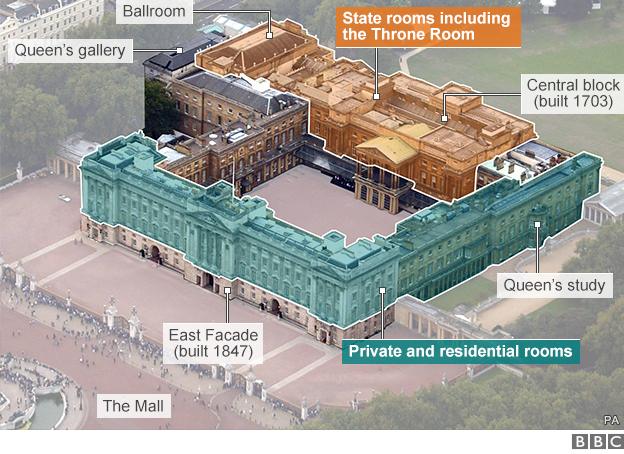
The figure does not include the cost of providing security for the Royal Family.
It comes as the Crown Estate's annual results show its capital value is at a historic high of £11.5 billion - up 16.1%.

Analysis
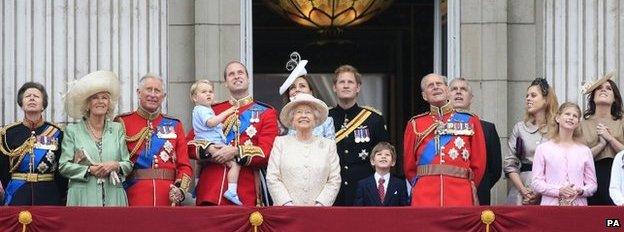
By Peter Hunt, BBC royal correspondent
It's the fantasy of many a royal official that their annual accounts will be published and cause barely a ripple.
The reality, once again this year, is very different.
First, at Buckingham Palace there was the suggestion - denied robustly in both London and Edinburgh - that with more devolution Scotland might pay less towards the Queen's upkeep.
Then in Berlin - where the royal press pack is in residence for the Queen's state visit - an official was questioned about the year-on-year increase in taxpayer funding the monarch is enjoying.
He said the funds were needed to address a backlog in property maintenance.
The official raised the spectre of the head of state being one palace down for a few months while its ageing plumbing and wiring was sorted.
This year, for the royals, their "financial cloud" has a silver lining - there has been less focus on the money some of the Windsors spend on chartering private jets.

'Fundamental re-service'
The accounts show that almost half of the annual grant was spent on payroll costs.
Property maintenance dipped from £13.3m in 2013-14 to £11.7m, with a surplus of £2.2m transferred to reserves to help meet the future cost of work on Buckingham Palace.
The income earned by royals was recorded at £13.3m down from £13.4m in 2013/14.
Other details to emerge from the annual accounts for 2014/15 include:
Annual expenditure has risen £3.6m or 11% over the past five years
There has been a 21% increase in travel costs, which rose from £4.2m in 2013-14 to £5.1m in 2014-15
The royal household made 63 journeys that cost £10,000 or more
The most expensive journey made by the royal household was £446,159, for an official visit by the Prince of Wales and the Duchess of Cornwall to Colombia and Mexico from 28 October to 5 November
The average number of sick days taken by employees of the royal household was 5.8 days - below the national average of 6.6
The Queen undertook 196 public engagements - 113 fewer than in 2013/14
A total of £3.8m was spent on the general maintenance of the royal estate, an increase of 12% on 2013-14 and 23% on 2012-13
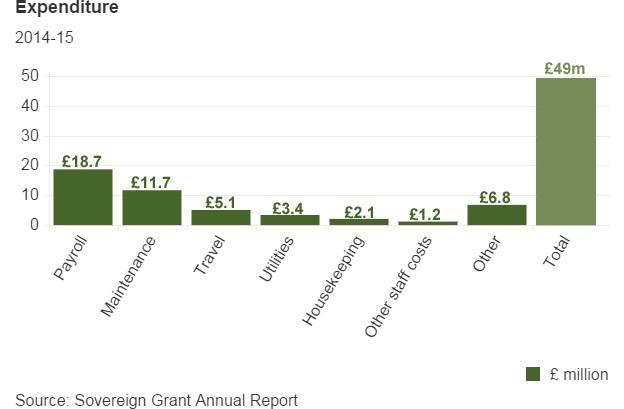
The total spent by the royals was £35.7m which equates to the sum total shown in the graph of £49m minus income earned of £13.3m
Buckingham House, as it was originally known, was built by the Duke of Buckingham in 1703. It was bought by George III for his wife, Queen Charlotte, in 1761 and remodelling began a year later.
George IV, on his accession to the throne in 1820, oversaw its transformation into Buckingham Palace with the assistance of architect John Nash.
Buckingham Palace now boasts 775 rooms, including 19 state rooms, 52 royal and guest bedrooms, 188 staff bedrooms and 78 bathrooms.
The palace - like Windsor Castle - does not belong to the Queen, but is instead held by the monarch as sovereign.
The Queen, who is 89, spends a third of the year hosting events at the palace - her official London home.
Sir Alan Reid, keeper of the Privy Purse, said: "Over the coming years, the maintenance of the estate and in particular Buckingham Palace, will present a significant financial challenge.
"We will continue to work closely with the trustees to ensure that the funding for the royal household reflects that challenge."
Royal sources told reporters that significant amounts of asbestos needed to be removed from Buckingham Palace in a project described as a fundamental "re-service".
"One option is for the palace to be vacated. The initial estimate for the refurbishment of Buckingham Palace looks like £150m," a source said.

The Queen met guests including footballer David Beckham at Buckingham Palace this week
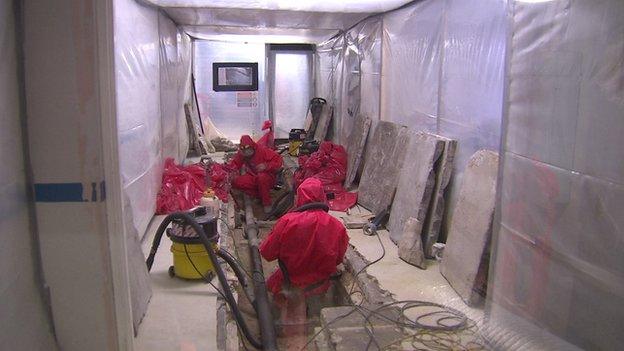
Work to remove asbestos from the basement of Buckingham Palace was completed last year
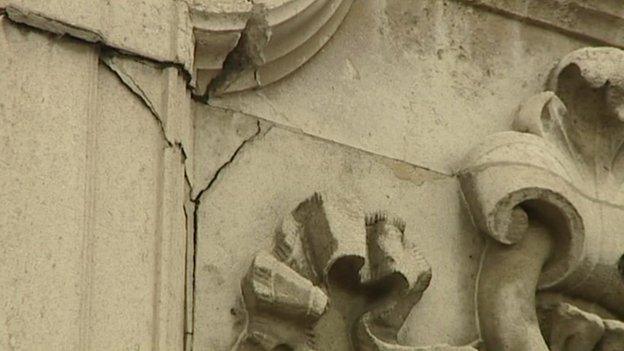
Cracks have appeared in some exterior walls at Buckingham Palace
"That depends on how you go about refurbishment, whether you do it in parts or the whole thing (at once)."
Graham Smith, from campaign group Republic, called for a change in approach.
"It is time that the whole funding system is scrapped, re-written, that the monarchy is put on a proper budgetary fitting - and that maintenance of the palace is taken out of their hands and given over to the same people that look after the Tower of London very well."

What is the Crown Estate?
It is an independent commercial property business and one of the largest property portfolios in the UK
The majority of assets are in London, but the estate also owns property in Scotland, Wales and Northern Ireland
Holdings include Great Windsor Park and Ascot racecourse, but most of the portfolio is made up of residential property, commercial offices, shops, businesses, and retail parks
The estate started in 1760 when it was agreed that surplus revenue from the crown's estate would go to the Treasury and, in return, the monarch would receive a fixed annual payment
The estate belongs to the monarch for the duration of their reign, but cannot be sold by them and profits go to the Treasury
The monarch is then given 15% of the annual surplus of the estate, known as the Sovereign Grant, to support official duties

Reports that Scotland's contribution to royal funding could be reduced by more than £1.5m if plans for further devolution go ahead have been dismissed by both the UK and Scottish governments.
A royal source quoted by the Press Association said there could be a cut if profits from the Crown Estate in Scotland are retained by the Scottish Parliament rather than the UK Parliament in a year's time.
And Buckingham Palace also said that to imply Scotland would not pay for the monarchy was "simply wrong".
A spokesman said: "We said explicitly that to imply Scotland would not pay for the Monarchy was simply wrong and we accept unreservedly the assurances of the Scottish Government that the Sovereign Grant will not be cut as a result of devolution of the Crown Estate."
But both the Scottish and UK governments said they did not expect devolution to have any negative impact on Scotland's contribution to funding the monarchy.
A UK Treasury spokesman said the sovereign grant would not be "adversely affected" by devolution.
First Minister of Scotland Nicola Sturgeon said claims Scotland would withhold money had "no basis in fact".
"By hook or by crook, whatever way is actually agreed to do this, Scotland will pay our full contribution to the sovereign grant. There is no intention to cut our contribution," she added.
- Published24 June 2015
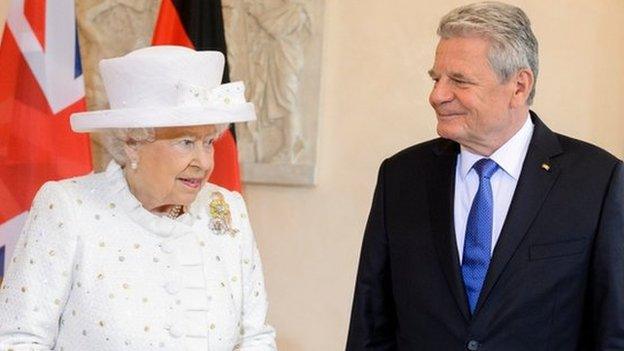
- Published24 June 2015
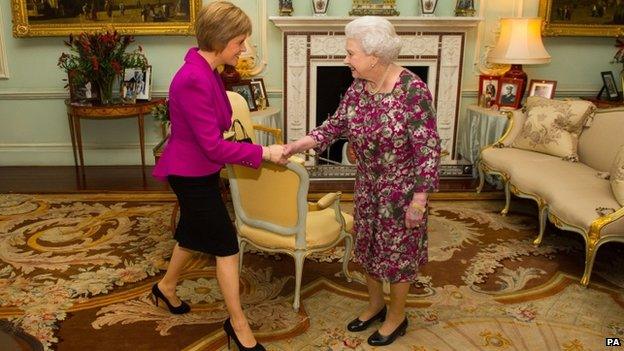
- Published24 June 2015
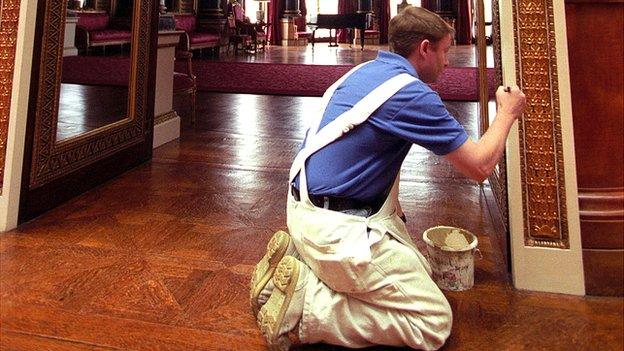
- Published18 June 2015
